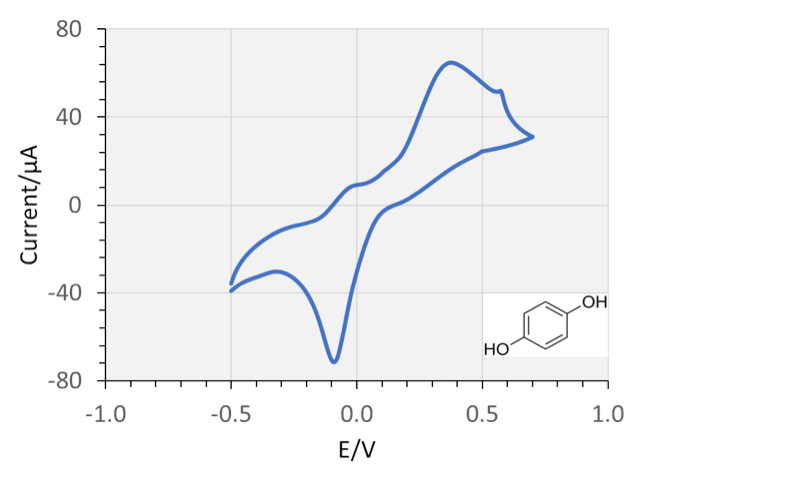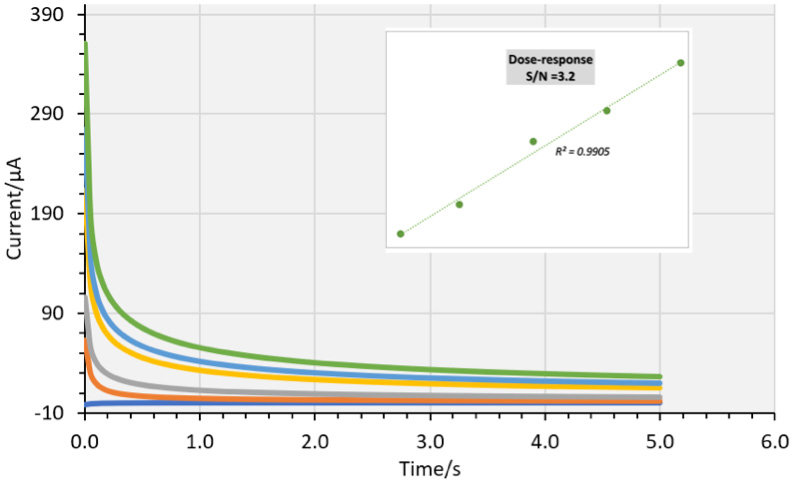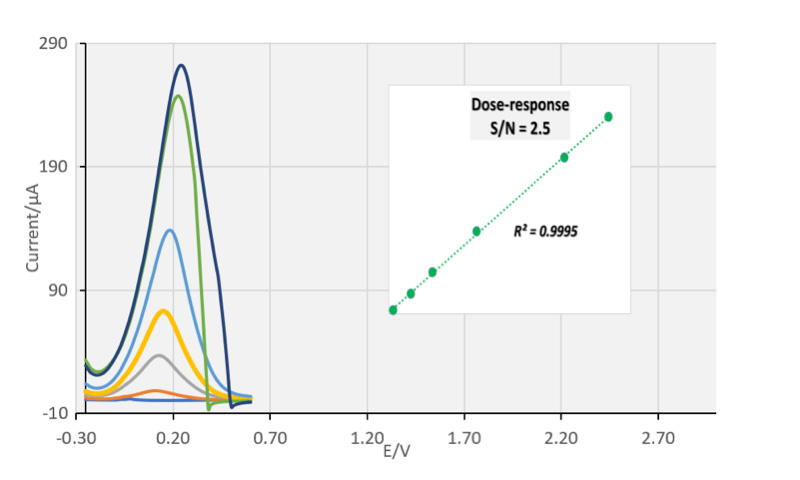Electrochemistry – One Size Doesn’t Fit All…
Developing a commercial electrochemical assay starts off from a similar place….characterizing the core test method. This can be done very easily by identifying the electrochemical mediator to be detected by the sensor.
Performing a basic cyclic voltammogram is a good way to identify a suitable potential that should be applied with other more rapid electrochemical methods. The below mediator shows 2 peaks of interest at -0.1V and 0.371V

Applying a 0.37V potential in a chronoamperometric test method, across a range of mediator concentrations yields transients that when analysed using a standardized algorithm produces a dose response curve.

As the test method will ultimately be used with a clinical samples (such as whole blood, plasma, urine or other sample type), a potential of 0.37 is not ideal (due to the range of endogenous interfering substances that will also be “stimulated” at this potential, leading to the possibility of bias in the diagnostic device: lets fix this!
Changing the electrochemical interrogation of the sample on the electrode will open options in terms of more suitable potentials (in a less interferant-prone range).
Using Square Wave Voltammetry as an alternative allows for a significantly lower potential to be applied. The resultant transients can easily be integrated to yield sensitive and robust dose response curves as can be seen in the image below.

By utilizing FlexMedical Solutions’ electrodes, and our industry tried and tested rapid prototyping methodology, we can move from sensor generation, to cyclic voltammetry, and on to square wave voltammetry in a day (albeit a rather long day!), producing rapid data showing proof of concept for our clients in record time!
If we can achieve this in a day, think what we could achieve during your feasibility timelines!